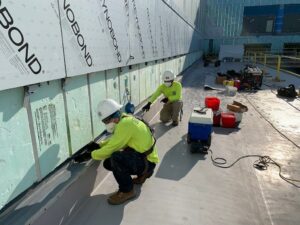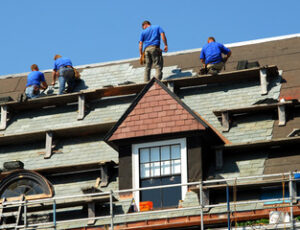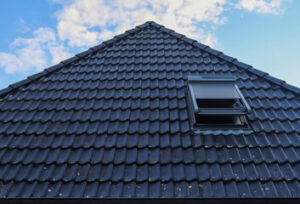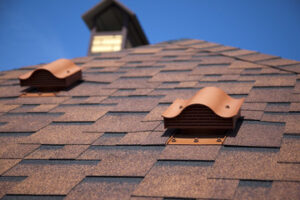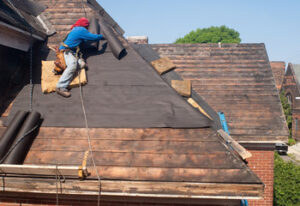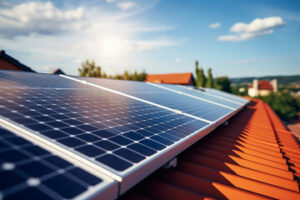The first step in Roof Repair NJ is to inspect the damage. Look for water stains, pooled water, sagging, or dampness.
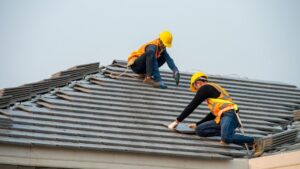
Check for dents — especially on metal roofs. Moisture trapped in these dents can lead to mold and mildew and cause serious structural problems. Also, check the condition of roof vents, chimney seals, and skylights.
Shingles are the outer layer of your roof that keeps water, snow, and debris from seeping into your home. While they are designed to be long-lasting, inspecting them annually and after severe storms is important to ensure that they’re intact and functioning properly. If left unattended, shingle damage can cause moisture to leak under them and eventually rot the wood sheathing underneath. Even small shingle damage should be repaired right away to prevent it from spreading.
A shingle can pop up for a variety of reasons, from improper installation to age-related deterioration and moisture issues. It’s important to determine the underlying issue when deciding on the best method for repair. A professional roofer will be able to assess the situation and recommend the appropriate course of action.
If a shingle is simply cracked or torn, replacement isn’t necessary – it can be resealed. To do so, start by removing any nails holding the target shingle to the roof deck. Next, slide a flat pry bar carefully under the edge of the shingle. This will break the shingle sealant that is keeping it in place, allowing you to lift and remove the shingle.
Once the shingle is removed, apply a thick bead of roof sealant to the area where it was cracked or torn. Press the new shingle into position and firmly nail it to the roof deck. If you used a flat pry bar, be sure to replace the nail that was held by the damaged shingle. Once the new shingle is sealed, cover any exposed nails with roofing cement to protect them from the elements.
If you’re worried about your neighbors seeing that you’ve made a repair on the roof, camouflage the sealant with some crushed-up granules from old or leftover shingles. This trick will help the new shingle blend in with the rest of the roof and keep your home looking great. If you notice a lot of shingle damage throughout your roof, it may be time to call for a professional roofer. They can help you decide on a plan for comprehensive roof repair that will protect your home for years to come.
Flashing
Flashing is a thin sheet of metal bent into place to close corners and crevices where water might leak through shingles and into a home or structure. It is typically made of galvanized steel, though other metals such as copper can also be used for this purpose. It is most often installed where a roof meets a wall, such as around chimneys, dormers, vent pipes and window openings. It is also used in areas where the roof slopes meet at valleys and rafter edges, as well as where roof penetrations like skylights or chimney stacks extend outward from the roof surface.
A good roofer will install the proper flashing for each of these situations. For example, a chimney requires special two-part flashing called base and counter-flashing to ensure that rainwater always meets a surface that can direct it downward. This is important because without it, rain could dribble down inside the chimney and enter a home through the shingles below.
Another type of flashing a roofer might use is step flashing, which includes “L” shaped pieces of metal that overlap like fish scales along a vertical wall-to-roof juncture. This is particularly effective around chimneys, dormers and other protrusions that would be difficult to close with a single piece of flashing.
While flashing is typically installed at the time of a roof installation, it can wear out over time and may require replacement. Signs of wear include water stains on walls near flashing, cracking in the caulk used to seal it and rust spots on exposed flashing metal. If any sections of flashing are missing entirely, it is likely necessary to replace them immediately for the water tightness of certain parts of a building to remain intact.
A skilled roofer should inspect exposed flashing annually, especially after heavy rains. If the caulk looks old, cracked and deteriorated or has been removed, it should be replaced with a high-quality product. It is important to check that the flashing is properly sealed against the siding and corner boards, as well as the gaps between windows and their frames. Leaks caused by improperly installed flashing can be extremely expensive to fix.
Gutters
Gutters are essentially long troughs that sit along the edge of your roof and catch all the rainwater it sheds. They then move the water to downspouts, which are then carried to the ground and away from your home’s foundation and walls. Without gutters, the water would pool near your house, eventually causing damage that can easily cost thousands of dollars to repair.
In addition to their practical function, gutters can also add a bit of visual interest to your home’s exterior. They can be made from a variety of materials, including copper, aluminum and vinyl. While different materials have varying levels of durability, all can help to improve your home’s curb appeal.
A gutter system is also an important investment because it can save you from costly structural damage. Leaking or broken gutters can allow water to seep through the attic, causing mold, mildew and wood rot. Excess water can also flood basements, cause soil erosion and damage garden areas or flower beds. Gutters prevent all of this by providing a quick and easy way for water to escape your roof.
To ensure your gutters continue to work properly, you should clean them on a regular basis. This includes removing leaves, twigs and other debris from the troughs. You can do this yourself using a tall ladder and some gloves. However, it is always best to hire a professional, especially if the gutters are clogged.
Having your gutters repaired by a professional is one of the best investments you can make for your home. Not only do gutters keep your home protected from expensive structural damage, but they can also significantly increase the value of your property.
A good roofer will start by inspecting your fascia board to determine if it needs to be replaced. They will look at the condition of the old board and its slope to ensure that the replacement is the correct size. They will also check for signs of water damage such as rotting or bowing, and then remove the old fascia board before installing the new one.
Vents
Roof vents allow hot air and moisture to escape the attic, which helps prevent mold and mildew in the home. Proper ventilation also reduces energy costs by decreasing the temperature in the attic. If you have problems with your roof vents, it’s important to repair them as soon as possible to avoid more expensive repairs later on.
Ideally, your home should have both gable end vents and ridge vents. Gable end vents are nailed into the gable ends of your shingles, while ridge vents are installed at the crest of the roof. Gable end vents are more common and easier to repair, but ridge vents are more effective because they’re able to pull air from all directions.
A clogged roof vent is one of the most common problems with your ventilation system. You can fix this by removing any debris in the area of the vent. It’s also a good idea to use a wire brush or vacuum cleaner to remove any clogs that are more serious.
Another common problem with roof vents is that they become loose or damaged. This can be due to weather damage or just from age and wear. It’s important to check that the vent cover is securely attached to the pipe, and if necessary, replace it.
You can also check to make sure the plumbing vent boots are still intact. These are rubber covers that slide down over pipes that protrude through the roof, such as exhaust or ice dam vents. You can replace these with new ones if they’re missing or cracked, and you can find them at most home centers.
If you’re unsure whether your vents are working, wait for a windy day and go into the attic to see if you can feel the breeze coming through the vents. If not, you may need to hire a roofing expert to repair them.
Poor attic ventilation can lead to many problems, including excessive heat and humidity in the home, mold and mildew, and ice dams. It’s crucial to have proper ventilation in every climate, but especially if you live in a colder area.
